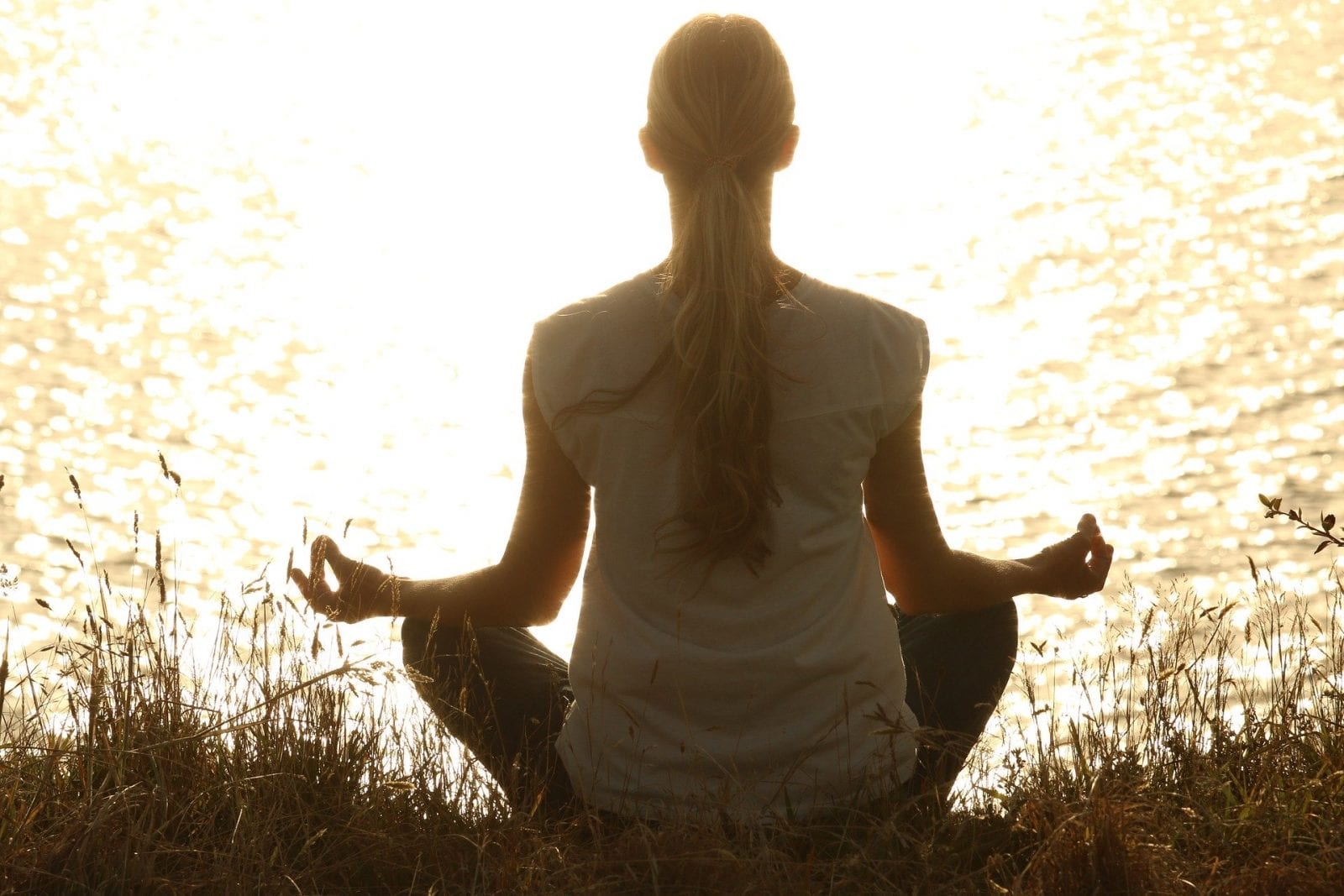
We get little commissions for purchases made through links in this post. Our editors carefully choose to promote only those products/services that resonate with our readers.
The earliest known mention of the term Yoga was found in the sacred texts of Rigveda. It is believed that this discipline originated approximately 5,000 years ago. It was during the Indus-Sarasvati civilization in what is now recognized as North India. Hatha and Ashtanga are two of the most common styles of yoga practiced around the world. Yin Yoga also has its roots in North America.
Yin Yoga is known to the world as a slower, more meditative form of yoga. It helps you in stretching connective tissues of your body such as your ligaments, fascia, and joints. Its slower pace enables you to connect with your inner self and be in sync with your mind and body. As you sit or lay on the floor, passively hold a pose. Stretch a part of the body and lengthen those rarely-worked tissues while you also learn how to sit comfortably with your thoughts and breathe through any discomfort.
Let us take a detailed look at Yin Yoga and know more about the challenges and benefits of yin yoga.
What Is Yin Yoga?
Yin Yoga is a passive practice. In it, the supine and seated poses are held in place for 3 to 5 minutes. It is designed to help you with sitting for long periods of time, and far more comfortably, in meditation poses. It stretches your connective tissue around your joints, especially, the knee, sacrum, spine, and pelvis.
Originally introduced by Paulie Zink, this practice is considered to be able to access deep layers of your fascia. It incorporates various principles, such as asanas and traditional Chinese medicine. For people who are just beginning the practice, the asanas should be held for only 45 seconds to two minutes. Practitioners who have more experience can stay in one asana for nearly five minutes.
Yin yoga increases the circulation in the joints, especially to fascia, ligaments, and tendons. It does so by applying moderate amounts of stress on them. This helps in increasing the flexibility of these joints. Yin yoga also has a more meditative approach to yoga, and can help in slowing the heart and mind.
When we experience any kind of discomfort, we have the tendency to become tense. Yin Yoga teaches us to change the direction of our thoughts and focus on our breathing. One of the many benefits of Yin Yoga is the ability to provide us a safe space for relaxation and calm breathing.
TheMindFool Recommends
Yoga International lets you practice at home with the world’s top Yoga Teachers. Check them out!
Yin – The Restorative Component of Vinyasa
Many yoga practices offer a physically challenging, exercising practice. Yin yoga does more than that. It allows you to cultivate a habit of relaxing and breathing while exercising. Both physical and mental well-being is important for the individual to be holistically healthy, and yin yoga offers precisely that.
Many people skip the meditative aspect of a power Vinyasa practice. They choose yoga asanas that are more vigorous in nature. Yin yoga offers a more meditative, spiritual, and deep experience that is restorative in nature.
We live in a world that is constantly on the go. We are always moving, doing some activity, experiencing stimulation, and working on one or another responsibility. Amidst all this, a yin yoga class focuses on being still, and that is why it can be more surprising and challenging than a fast-paced class.
Being present, still, and working on the inner aspects of the mind is the focus on Yin Yoga. It allows you to stretch deeply, and while you do that, you create more space in your mind and body.
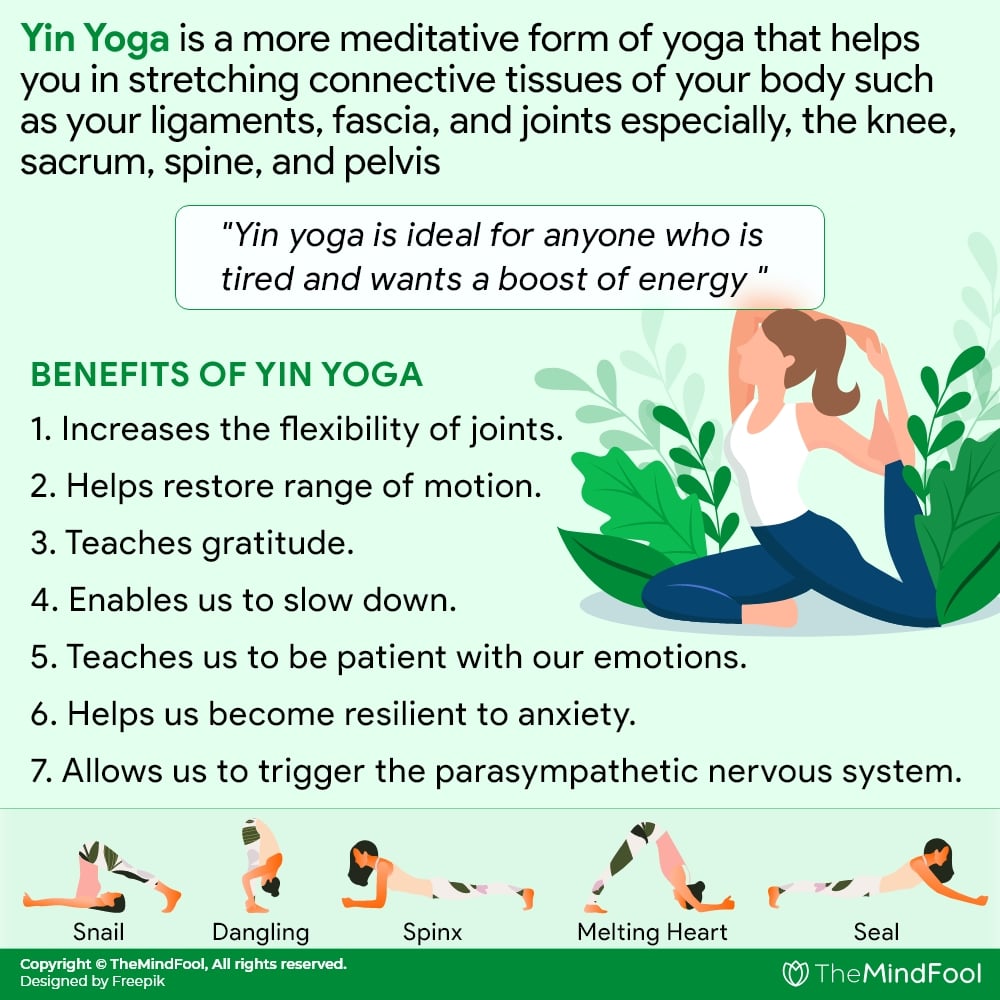
History of Yin Yoga
In the late 1970s, the highly revered martial arts teacher Paulie Zink began teaching a range of long-hold floor poses which were a combination of Hatha and Taoist yoga. As the form gained popularity, he began teaching advanced levels by combining sitting and lying postures of yin with standing postures of yang, smooth and circular motions based on Taoist concepts of yoga, breathing technique, and gentle stretch movement of Chi Kung, and Taoist alchemy based on traditional Chinese medicine.
Paul Grilley, another popular yoga teacher, sought our Zink and began practicing under him. In the late 1980s, Grilley met Motoyama, a Japanese Yogi, and scholar, and shortly after, he began infusing Yin yoga postures with the physiology of Traditional Chinese medicine as well as meridian theory. Several yin yoga teachers around the world, including Bernie Clark, claimed that Grilley’s model resonated with practitioners and that he had enhanced the practice of yin yoga.
TheMindFool Recommends
Looking for Yoga lifestyle garments and gear? Check Yoga Democracy – we love their designs!
One of Grilley’s disciples, Sarah Powers, incorporated Buddhist psychology along with Grilley’s teachings, with a strong focus on the meridian system. Powers was the one to suggest the name Yin Yoga, as opposed to ‘Taoist yoga’ by Grilley. Zink, Grilley, and Powers began teaching Yin Yoga to seekers, and by 2009, the form had spread across North America as well as Europe.
Yin Yoga vs Yang Yoga
Like two sides of a coin, yin and yang yoga works in combination with each other. To clarify the difference between the two, yin yoga is a slower, more meditative form of practice. Here, you passively hold the postures for a longer duration, working on the deep, dense yin tissues in the body. On the other hand, yang yoga is a more dynamic, warming form of practice that can be related to traditional Hatha or Vinyasa flow that helps you in building stamina, flexibility, and muscular strength.
These two are more or less relative terms. They simply categorize specific forms of yoga. Yang yoga practices involve the softer, most elastic tissues of the body such as your muscles while yin yoga targets the barely-used, rigid ones like the ligaments, tendons, fascia, and bones.
Yin poses are more downward, passive, cooling, and internal whereas yang practice is more upward, dynamic, warming, and external.
What Is Yin Yang Yoga?
Yin yang yoga is a combination of two elements of yoga and it helps you incorporate the benefits of passively holding the yoga asanas with more dynamic approaches, sequences, and postures.
As mentioned before, based on the Taoist concepts, yin and yang mean opposite and complementary principles in nature. Yin Yoga is a more feminine approach to Yoga, whereas Yang yoga is more masculine. Yin is more stable, passive, downward moving, cold, stable, and immobile. On the other hand, yang yoga is active, hot, mobile, changing, and upward moving.
In Taoist practice, the sun is yang, whereas the moon is more yin. In our body, the stiff parts of the connective tissue, such as our tendons, fascia, and ligaments are yin. On the other hand, more mobile and pliable tissues like muscles and blood are yang.
In general, passive asanas and restorative parts of yoga are yin, while the active and dynamic asanas are yang. And for a balanced approach that focuses on health in a holistic manner, we need both yin and yang aspects to be in harmony.
A class that features yin yang yoga would generally start with yin yoga and calm the mind. It will relax your joints before you move on to working with your muscles in yang yoga. However, this is not the only acceptable sequence in yin yang yoga.
The practice can also start with dynamic yoga poses and, in the end, you hold the poses for a longer period of time to calm your mind and relax yourself.
Benefits of Practicing Yin Yoga and Yang Yoga Together
Sarah Powers said that practicing yin yang yoga can help you with understanding what it means to feel movement in stillness and stillness inflow. As mentioned previously, combining yin and yang elements of yoga in one session of yoga can create a balanced practice and has a very powerful effect on your energy level at the end of the class.
For instance, if you are generally feeling low in energy at the start of the class, you can start with a yin class and begin your practice. It will help you get on the mat with no intensive exercise in the beginning and start practicing in a cool, calm, and collected manner. Additionally, by incorporating yin yoga in the very beginning of your class, you can carry over a mindful state of being into your dynamic practice, which can enhance the effects of the latter.
On the other hand, if you start your practice with yang yoga and finish with yin, you will leave the session feeling calmed and grounded. This is especially helpful if you are feeling anxious and agitated generally, or want to sleep in a few hours.
How is Yin Yoga Different from Other Yoga Practices?
Yin yoga is very different from yang yoga practice. This is because of two main reasons. The first is that yin yoga involves holding poses for several minutes. And the second is that it involves stretching of connective tissue around a particular joint. To do the latter, you should relax the muscles lying over the joint. Otherwise, the connective tissue will not receive proper stress.
You can easily understand this by pulling on the middle finger of your right hand. First, do it when your right hand is relaxed, and then when it is tensed. When the hand is relaxed, you will feel a stretch where the finger is connected to the palm. On the other hand, when the hand is tensed, you will pull on the muscles, but not across the joint.
Yin yoga requires you to relax all your muscles around the connective tissue you want to stretch. But it may not be safe, or even possible, to do it for all yin yoga poses. For instance, when you are doing a forward seated bend, you can pull gently with your arms to stretch the connective tissue over your spine. But for these connective tissues to be stressed, you need to relax the muscles around the spine itself. This may not be possible.
Additionally, standing poses, inversions, and arm balances also require muscular contraction. Therefore, they cannot be done as yin yoga poses. Many yin yoga poses are inspired by classic yoga asanas, but the focus here is on relaxing muscles, instead of contracting them.
This is why the techniques for employing them may be different than the normal ones. There are certain distinctions that you need to follow when doing yin asanas, if you are only familiar with yang asanas.
Why Does Yin Yoga Advocate to Stretch Connective Tissue?
Modern exercise practices do not advocate stretching of joints. Whether you like lifting weights, doing aerobics, skiing, or cardio – most precautions state that you must move in a way that does not put any stress on your joints.
And for the most part, this advice is accurate. If you stretch your connective tissue excessively outside the range of its motion, or if you suddenly apply a lot of force, you may end up hurting yourself. Yin yoga is based on the principle that you should stress your body tissues only to the extent that your body responds by strengthening it, not hurting it.
This is applicable to connective tissues as well. For instance, if you stress your joints moderately when lifting a barbell, you do not get hurt. Connective tissue, therefore, is no different than any other kind of tissue in the body, including muscles. The only difference is that you need to exercise the connective tissue than your muscles.
Since connective tissue does not receive rhythmic contractions and relaxations like your muscles, it responds better to a slow and steady load instead of a sudden one, like muscles. That is why holding a yin yoga pose for a long time can stretch your connective tissue gently and in a healthy way. Your body will respond to such exercises by making the tissue longer and stronger.
Although connective tissue is connected to every organ, muscle and bone, the maximum concentration of this tissue is found in bones. If you do not use your full range of motion on a regular basis, you will notice that the connective tissue gets shortened over a period of time. It remains long enough just to accommodate your range of motion, no more.
What Are The Areas Stretched by Yin Yoga?
Generally speaking, yin yoga increases flexibility in non-flexible areas, like your lower spine, hips, and pelvis. Most people get scared at the thought of stretching their connective tissue.
And it is not surprising. Most of us do not think about our connective tissue until we sprain an ankle, strain our back, or hurt our knee. But the truth is that yin yoga does not stretch joints that are already vulnerable. It also does not unnecessarily strain any areas that do not need to be.
For instance, yin yoga does not advise you to stretch your knee from side to side. This is because your knee cannot bend in such away. When working with your knee, yin yoga would work by fully flexing and extending the joint, which is a fancy way of saying, bending, and extending your knee.
Since your knee is an extremely vulnerable joint, you should not stretch it aggressively. Generally speaking, yin yoga works on stretching areas of your body that are usually not very stretchable, like lower spine, hips, and pelvis.
However, it is possible to overdo yin yoga, as it is possible to overdo any exercise. Yin yoga is new to many practices, that is why, not all yogis may be familiar with the symptoms of overexertion.
Yin yoga is not especially strenuous for muscles, that is why, you will almost never feel any sore muscles, even if you overdo it. In most cases, if you have pushed too far, you may feel a joint feeling mildly sprained or sensitive when there is movement. Less obvious signs of exertion in these include gripping of muscles or a sense of soreness or misalignment.
Who Should Practice Yin Yoga?
Yin yoga is ideal for anyone who is tired and wants a boost of energy. For people who are feeling over-stimulated or have too much energy, yin yoga can work as a good outlet too.
The truth is that in the modern world, we are often bombarded by energy and stimulus all day long. Our minds are constantly busy processing all this stimulus. We are constantly working mentally to decide whether this information is valuable or not, and spending energy doing it.
Eventually, we get used to this sort of environment, and we cannot get away from it all even if we want to. Even if we desire some peace and quiet, we cannot quite get ourselves to stop browsing, or looking for things, or buying things.
Yoga is a way of keeping our mind occupied in a good way, and provides us with the serene and calm we desire. Yin yoga, along with any other form of yoga, allows us to feed the desire of our body to remain active, while still giving our brain time to calm down. Indeed, it is a healthier form of stimulation, that can help in balancing all aspects of our lives.
NOTE
You can feel this misalignment in the neck and sacroiliac joints. If any particular asana is causing such issues, you must stop practicing it for a while.
Or, you can also try to reduce your maximum stretch and try to increase your sensitivity for such subtle symptoms. One must proceed cautiously in these cases, and only extend the time and depth of the asanas slowly.
Effects of Yin Yoga on the body
Yin yoga works on the yin tissues of our body, that is, the connective tissues. Because our connective tissue responds better to a slow and steady load, yin yoga suggests holding poses for a longer period of time. This gentle stretching of tissues helps in making them stronger and longer.
Various types of yin yoga poses can also stimulate and remove any blockages you may have in the myofascial meridians of the body. These meridians help in balancing our internal organs. Additionally, because yin yoga requires relaxation of certain muscles of your body, it is not possible to do all kinds of yoga asanas in the yin way. This is also why different yin yoga asanas tend to have different names.
Effects of Yin Yoga on the mind
When you are in a yin yoga pose and are holding it for stretching connective tissue, it results in gaps in the mind. You should keep these gaps empty and open and allow your emotions to emerge. These emotions may be related to happiness, boredom, anxiety, sadness, etc.
Whatever the feeling may be, positive or negative, you should allow them to course through your body. Allowing your emotions to have space like this also gives you the power to not identify them. The key is to let the feelings come, without reacting to them. This way, you allow your mind to get rid of all that it is suppressing, and channel that energy into yoga.
This can help in clearing the mind and the blockages that these negative emotions may have created in your mind. The act of simply observing negative emotions, not giving them any juice, and letting them filter out of you is incredibly empowering.
How To Practice Yin Yoga?
You should do yin yoga in a room that is not heated. This is why you can practice yin yoga anytime and anywhere. The most important thing is to maintain the pose for an extended period of time, ideally between two to five minutes.
You should do the poses in a seated or reclined position. This is because they are meant to relax your muscles fully. Moreover, people should try to find stillness when they are in the pose for the asana. You should also avoid moving around or fidgeting a lot when you are in the pose so that you can fully release into the posture.
While doing the asanas, you should also try to push yourself to the point where you feel a deep stretch in the connective tissues. Yogis call it comfortable discomfort. This sensation should stretch your ligaments and fascia deeply, and not to the point that you are in pain.
Another important component of yoga is breath. When you are in a difficult or uncomfortable asana, focusing on your breath can improve things massively. In yin yoga, you must breathe from your diaphragm. You should feel your stomach and ribs expanding every time you inhale. You should also pull your navel into your spine as you exhale.
Make sure that your exhales are twice as long as your inhales. This allows restorative yoga flow and deep breathing. You can use some supporting material to make sure that you relax your muscles properly. The more you keep your bones supported in yin yoga, the more your muscles can be released.
For instance, you can place blocks under your knees when you are in a forward fold. You can also use rolled-up blankets under your seat when you are in the butterfly asana for easing your hips.
Yin Yoga Poses
All seated meditation postures have one thing in common. You should hold your back upright without any pain or slouching. This allows energy to run freely through the spine. The most important factor worth remembering for maintaining an upright posture is the tilt between the pelvis and sacrum.
For instance, if you are sitting in a chair so that your lower spine is rounded, your pelvis will tilt back. But when you sit up straight, the pelvis is in the same straight alignment. This is exactly what you need for seated meditation. If the pelvis is adjusted properly, the upper body will adjust itself.
To facilitate a seated meditation pose, you need to incorporate certain poses, like hip openers, backbends, forward bends, and twists. Additionally, forward bends should not just include the usually two-legged, forward bend that is done in a seated position. But it should also include Butterfly (Baddha Konasana), Half Butterfly (Janu Sirsasana), Half Frog Pose (Trianga Mukhaikapada Paschimottanasana), Dragonfly (Upavistha Konasana), and Snail (Halasana).
The forward bending poses also stretch the ligaments along your spine and can help with decompressing your lower spinal discs. The forward bends in the straight-legged poses can stretch the muscles and fascia along the back of your legs.
To know more about how to practice Yin Yoga, check out this video
Yin Yoga Benefits
There are several types of yoga practice that offer you a chance to get into a rigorous practice. There are some, like Yin Yoga, which give you the space to unwind and breathe. Unfortunately, a lot of yogis these days skip the latter. However, the importance of the combination of both can’t be highlighted enough.
Let us take a look at some of the benefits of Yin yoga.
1. Yin yoga practice can help restore range of motion
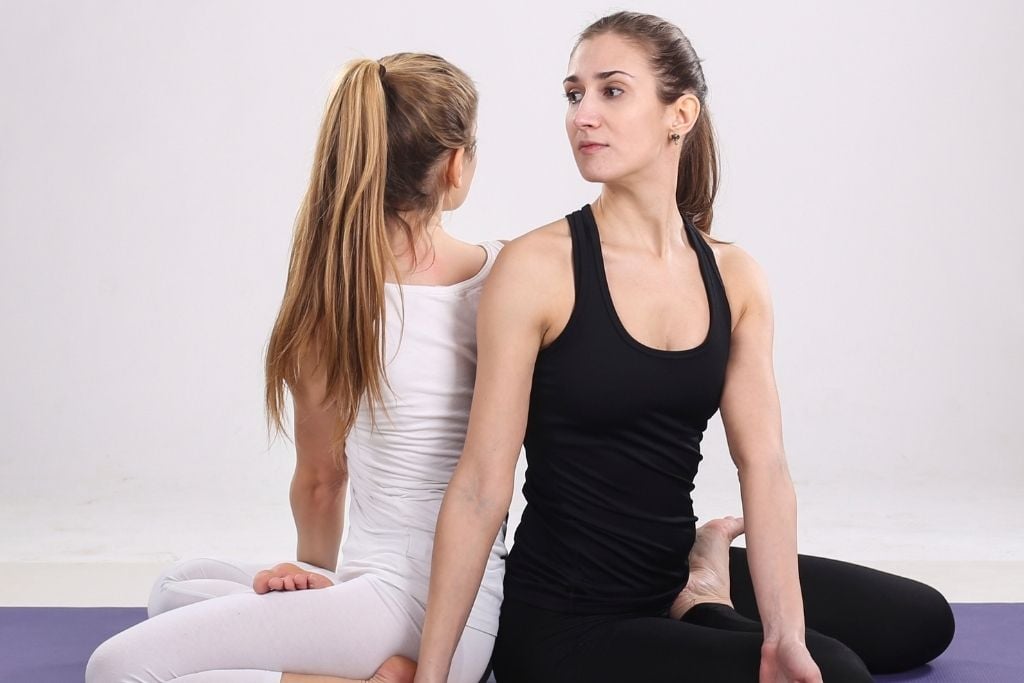
Injuries, habitual postures, and aging can often lead to adhesion and movement restrictions of movement. These adhesion block the flow of energy and nutrients in the body, resulting in aches and mobility limitations.
Yin yoga poses, when held for a longer duration, lengthen muscles and fascia and help break this adhesion. This, in turn, applies mild stress to the connective tissues and joints and increases their flexibility.
2. Yin Poses teaches gratitude
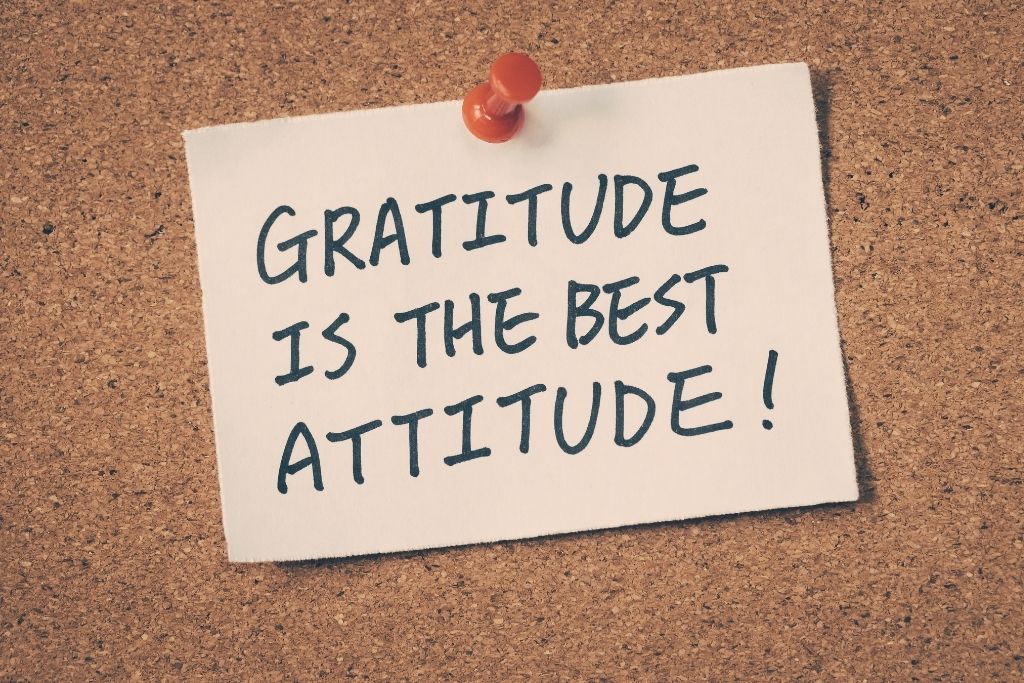
Practicing Yin yoga not only affects the connective tissues of the body but it allows us to connect with your body and appreciate how remarkable you are. As you sit calmly to hold your floor poses, you take a journey into your inner self and explore the deeper levels of your body.
You connect with the different parts of your body – internal organs, circulatory functions, respiratory system. This heightened awareness of how your body functions bring you closer to santosha (contentment).
3. Yin poses enables us to slow down
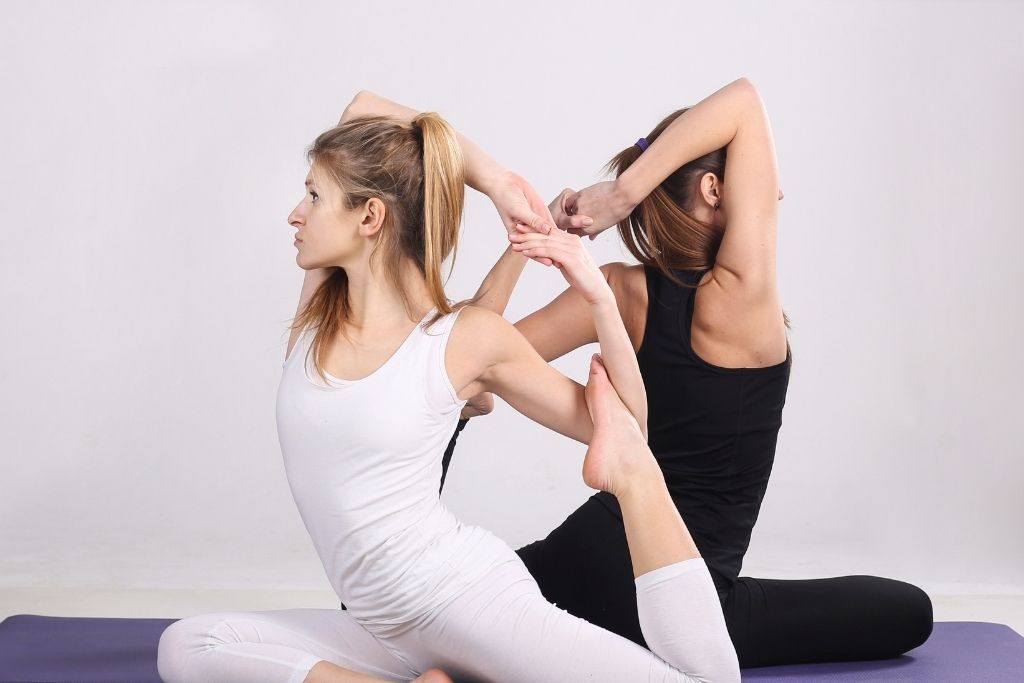
As you hold a yin pose for a period of time, your mind gets an opportunity to delve into stillness. And, as you allow yourself to be in the present and experience the subtle range of motion, the concept of time fades away.
Stresses, deadlines, and the constant anxiousness of ‘doing’ something is replaced by a massive space for relaxation and rejuvenation.
4. Long time hold of yin yoga postures teaches us to be patient with our emotions
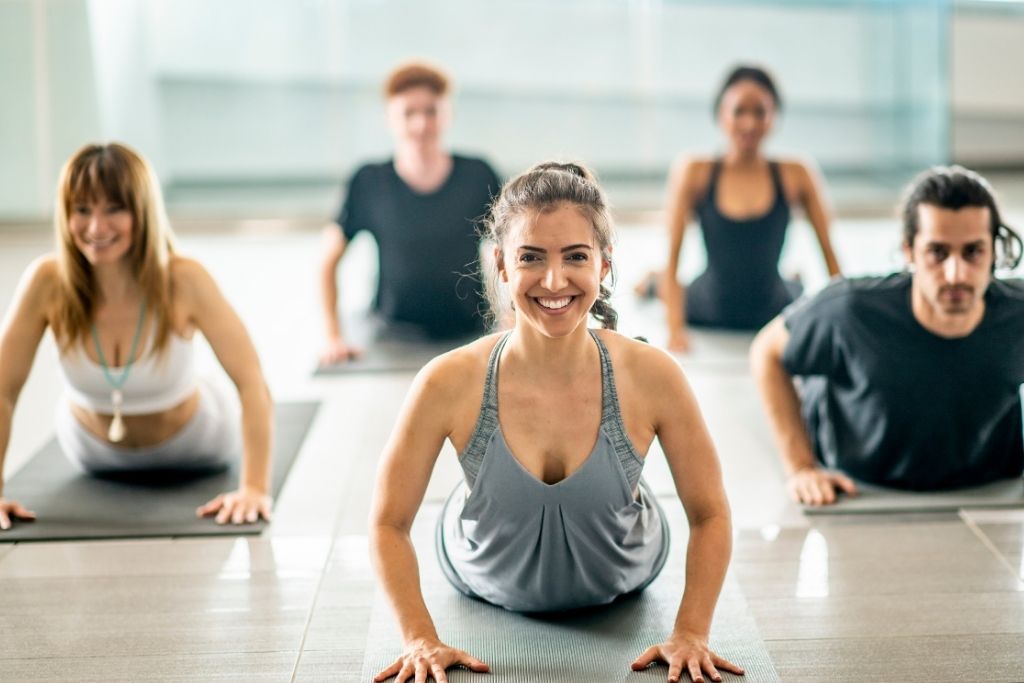
Just like tissues, nerves, blood cells, and atoms, our bodies also store feelings, memories, and emotions – lots and lots of them. And, it is not uncommon for them to surface while you are in a yoga class, irrespective of which form you practice.
The concepts of yin teach us to sit with them and be placid and nonreactive. So, when you suddenly experience a surge of emotions during a yin class, the conditions are non-toxic.
5. Yin Yoga practices help us become resilient to anxiety
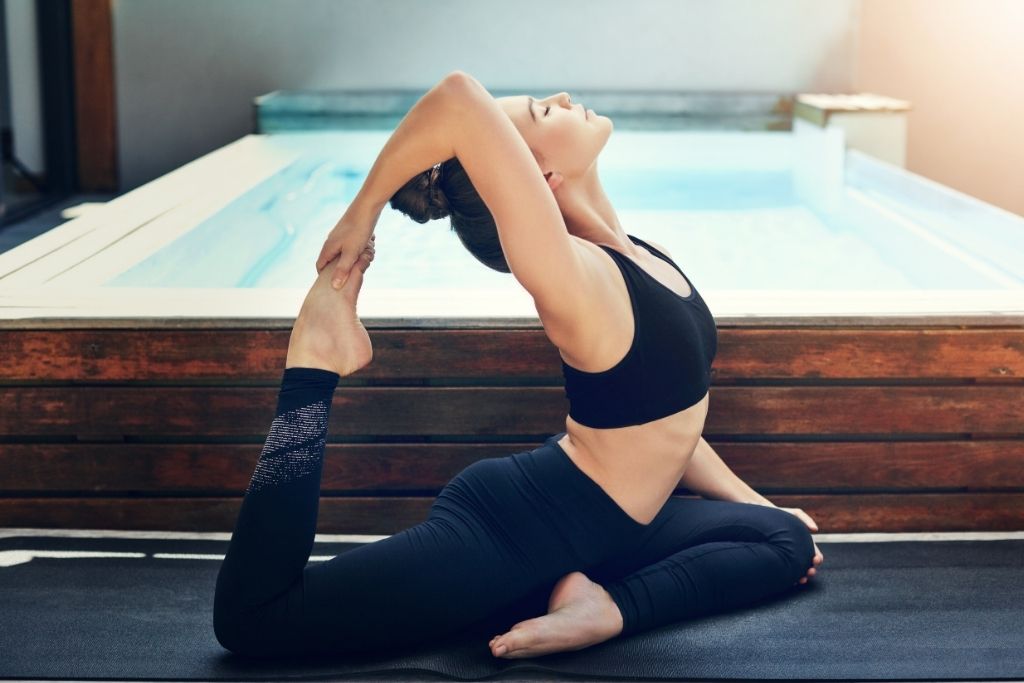
When you have to sit quietly in a pose for 20 minutes to practice yoga, it can induce anxiety. However, the basics of yin yoga teach you to remain gentle and calm. So, when you approach this anxiety with calmness and subtlety, your mind and body become used to this soft behavior.
Surrender is a popular factor in regular yin yoga. This also teaches you to give up the need to control, and this, in turn, helps you handle the many ups and downs in life with grace and without stress.
6. Yin Yoga allows us to trigger the parasympathetic nervous system
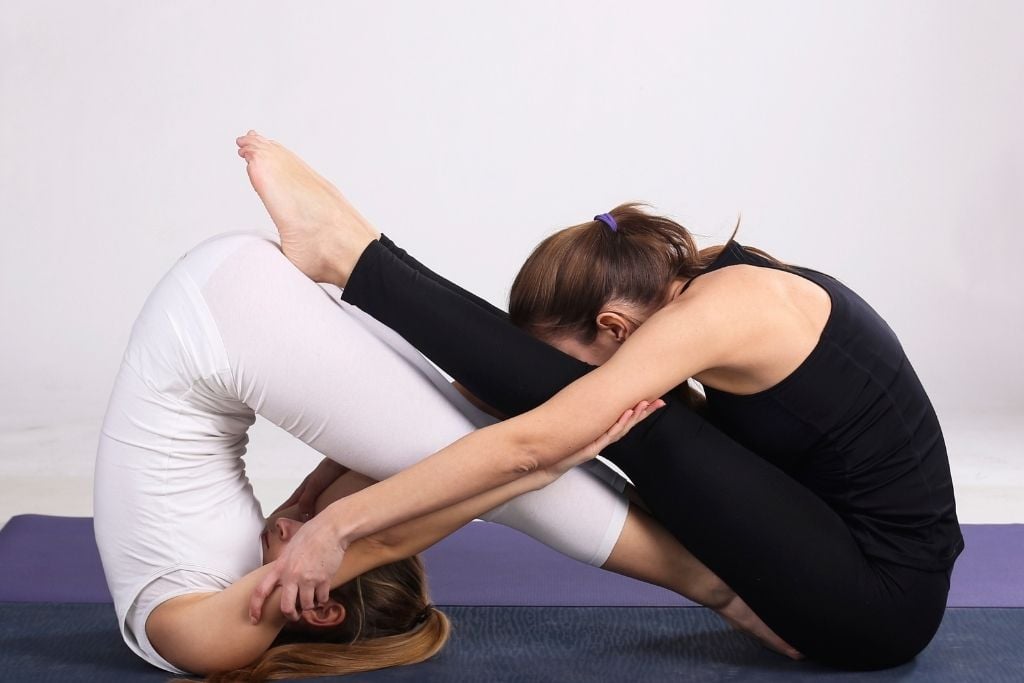
Diaphragmatic breathing, also known as belly breathing, has been known to activate the parasympathetic nervous system. The benefits of activating this system include but aren’t limited to blood pressure, immune functions, stress, digestion, and hormones.
However, as humans, we are used to staying with the sympathetic nervous system, moving from one deadline to another. As you gradually move deeper into your yin practice, your breath slows down, the belly softens, and the brain relaxes.
TIP
If you notice the yin and yang symbol, the white and black are in perfect balance. However, in our regular life, we are used to being very active and rarely introspective.
Over time, this can become mentally and emotionally draining. Through regular practice of yin yoga postures, you can restore this symmetry and be whole.
Misconceptions about Yin Yoga (Dangers of Yin Yoga)
Doctors, researchers, and even scientists have accepted the many wonders of yoga on the human mind and body. However, when people say that yin yoga could be inappropriate for some, we have to acknowledge that fact and agree. There is not a single form of yoga that can be ruled out as ‘meant for everyone’.
The reason behind this is the human variation which is so massive that there couldn’t possibly be a one-size-fits-all. But, with the proper guidance of a qualified yoga teacher and adherence to rules and principles, one could save themselves from any potential danger.
Let us take a look at some of the common claims and dangers of Yin yoga.
Yin Yoga is great for flexibility
It is often said that the practice of yin yoga improves flexibility, helps in tissue relaxation and regeneration, and improves the health of tissues by stretching the tissues of the body.
While this is true to an extent, unintentional and uninformed stretches cannot only be painful but may also cause inflammation and injury of nerves. This is why it is important to have an anatomical background before you begin your practice.
Yin Yoga boosts your nervous system
Another popular claim is that yin yoga postures help you process bottled up emotions and feelings as well as trigger your parasympathetic nervous system. Of course, this is true but only as long as you are stable enough to contain whatever you may be faced with.
The uncontrolled flow of emotions and memories, especially in people with past trauma or clinical depression or anxiety, can do more harm than good. Set boundaries and take small steps to overcome your emotional situations.
Pregnant Yin Yoga can be very healthy
It is often claimed that pregnant women can’t and must not indulge in any yogic activities except for those that are specifically crafted as prenatal yoga. And, this is entirely true. Several yin yoga teachers also function as prenatal yoga teachers who have helped in birthing babies and suggest that yin yoga can be very helpful.
What they also suggest is for expecting mothers to have a limited range of motion. Instead of increasing their existing range of motion, they must focus on benefitting mentally and energetically from the practice.
WARNING
It is strongly advised for expecting mothers to have the full consent of their doctors before indulging in any physical activity. The body of the mother may seem perfectly healthy externally, but it is important to have a thorough check-up of the conditions to correctly gauge your limitations.
Final Thoughts
It must be noted that your body will respond to a perfectly balanced practice when you achieve an appropriate amalgamation of yin and yang. As your connective tissue responds to the deep, long stretches of yin postures, your body will strengthen and tone itself during your yang classes.
You must also keep in mind that the categorization of yin and yang is not absolute. There will always be an aspect of yin within your yang practice when it comes to inner clarity and calming of breath, and likewise, yin yoga will always implement the yang practices of rhythmic breath flow.
Surabhi has a deep passion for words. She puts her heart and mind into whatever she pursues and craves for creative ventures. She has always been keen on creating original content that can make a difference. In her experience as a content writer, she has had the opportunity to work on several fields with Psychology being her favorite. Surabhi says, words have the power to transform the world, better than a sword. So she hopes to contribute her bit to this revolution. At TheMindFool, she feels lucky to have the opportunity to share content capable of bringing about a change in the lives of the readers.
